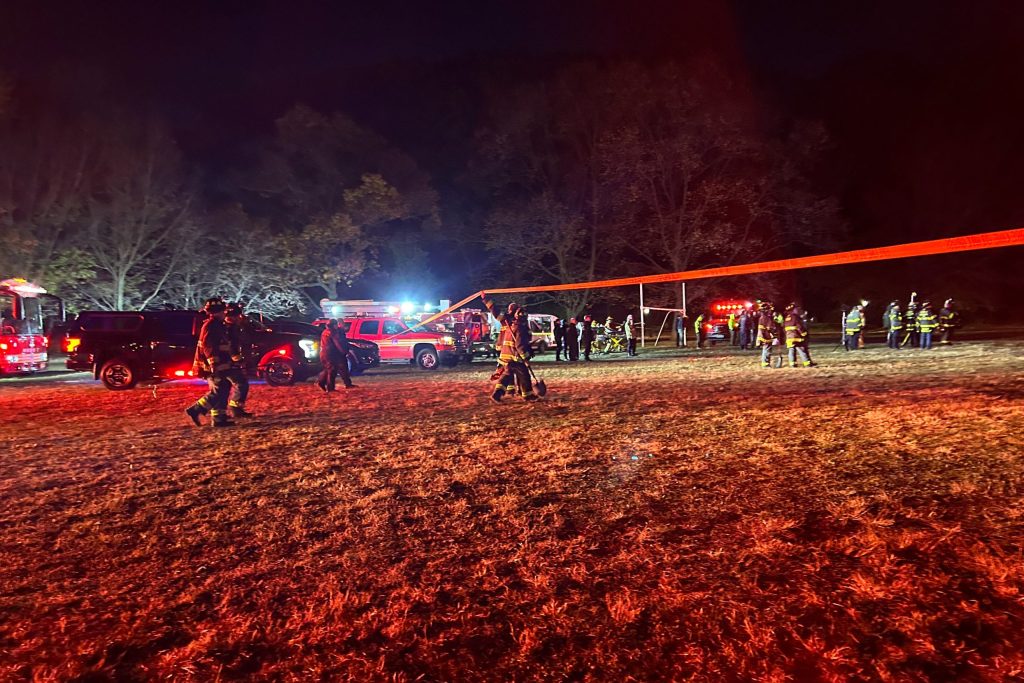As historically dry conditions persisted, Mayor Eric Adams on Monday declared a drought warning and paused a years-long project to repair a leak in the Delaware Aqueduct.
“While we cannot make it rain, we can take action to reduce the risk of drought emergencies in our city,” Adams said, imploring New Yorkers to conserve water.
As of Monday, the upstate reservoirs that provide New York City’s drinking water were at 60% capacity, about 19% less than normal. Over the past three months, the reservoir area experienced a deficit of more than 8 inches of rain compared to the average in that time period.
The warning marks an upgraded indicator from the drought watch Adams declared at the start of November. A drought warning, which triggers city agencies to implement water-saving plans, comes before a drought emergency, which would bring mandatory restrictions on water use. Moving from one level to another depends on how much water is in the reservoirs, the forecast and New Yorkers’ water consumption patterns.
Among the agency plans: The MTA will wash buses and trains less frequently and prioritize fixing leaks in tunnels and stations. The Department of Health and Mental Hygiene will conduct outreach to restaurants about how they can reduce water use. The Department of Parks and Recreation will limit water for fountains.
The lack of rain, plus the dry, windy weather can lead to increased instances and severity of fires, which has played out in New York City in recent weeks: the Fire Department has responded to over 300 brush fires in the past month, including in Inwood Hill Park in Manhattan, Van Cortlandt Park in The Bronx and Prospect Park in Brooklyn.
The coastal New York region, which includes New York City, experiences about 10 more exceptionally warm, dry, windy days annually compared to 1973, according to data by the nonprofit research organization Climate Central.
Officials urged New Yorkers to be mindful about fire risk and stressed an existing ban on grilling in parks, while the Fire Department created a Brush Fire Task Force to tackle the fires and share best practices.
They also urged residents to use less water by taking shorter showers, report leaky fire hydrants, flush the toilet only when necessary and sweep driveways rather than power-washing them.
Postponed Repairs
Because of the dry spell, the Department of Environmental Protection will postpone work on the Delaware Aqueduct, typically the source of 90% of the city’s drinking water. The work, which started in October, was meant to fix a three-decade-old leak that wasted 35 million gallons of water a day. During the repairs, the Delaware Aqueduct provided about half as much water to the city as usual, with more water coming from the smaller Croton Watershed.
That strategy was supposed to hold up during the repairs because the forecasts called for a wetter than average October, said DEP Commissioner Rohit Aggarwala.
“That forecasted wetter than average October — on which we based our decision to proceed — of course turned into a record dry October and that drought that we are now in,” he said.
Now, that water from the Delaware is unexpectedly needed, especially since New York’s daily water consumption is higher than normal.
Depending on the weather conditions, the repair work could resume as early as next October, Aggarwala said.
Aggarwala also asked anyone with a water bill, including homeowners and businesses, to sign up for DEP’s leak notification program, which sends an alert if water consumption is higher than normal.
While smoke from local brush fires may not bring as severe air pollution as in June 2023 — when smoke from wildfires in Canada blanketed New York City and turned the sky orange — New Yorkers may find themselves breathing in smoke and noticing similar health impacts: watery eyes, coughing, chest pain or difficulty breathing.
“Even if you can’t see the fires nearby, you might experience the effects,” said Emergency Management Commissioner Zach Iscol.
The same steps to reduce exposure to smoke can be applied in response to local fires: shut windows, use air purifiers, avoid strenuous exercise and wear a high-quality mask.
Masks are available at police precincts and libraries, Iscol said.

